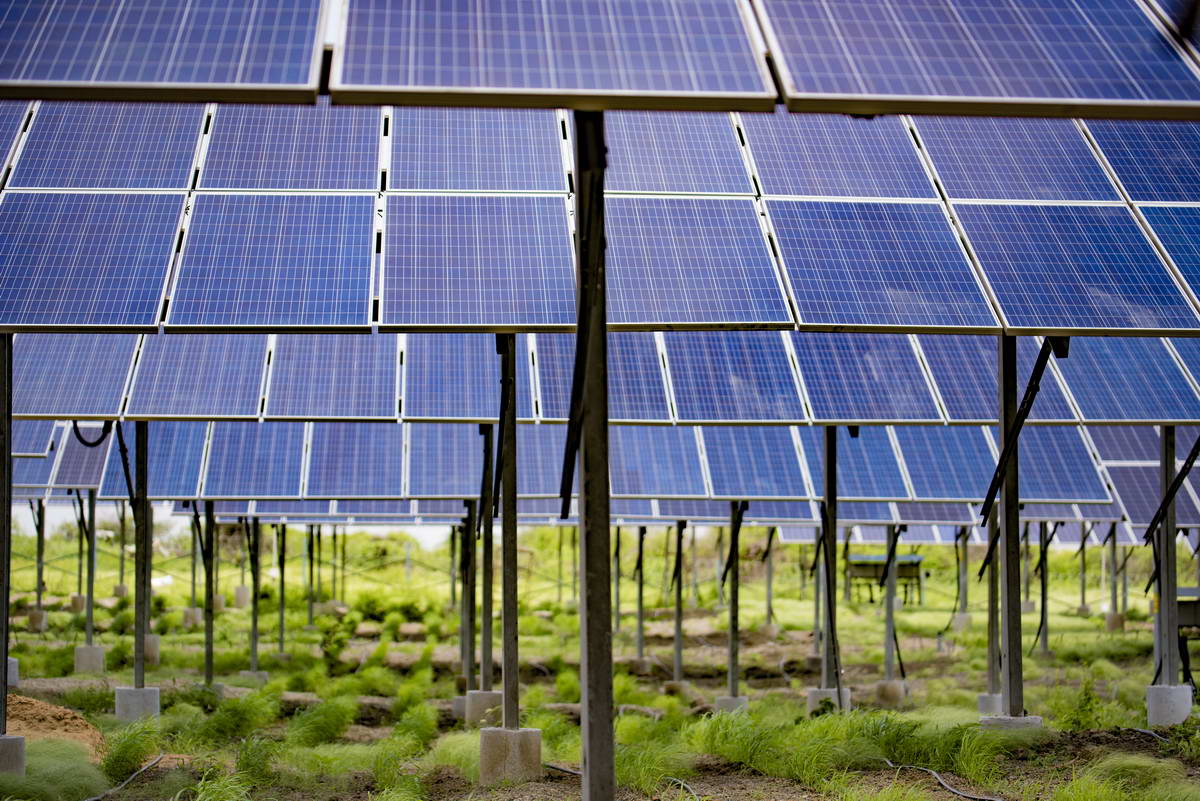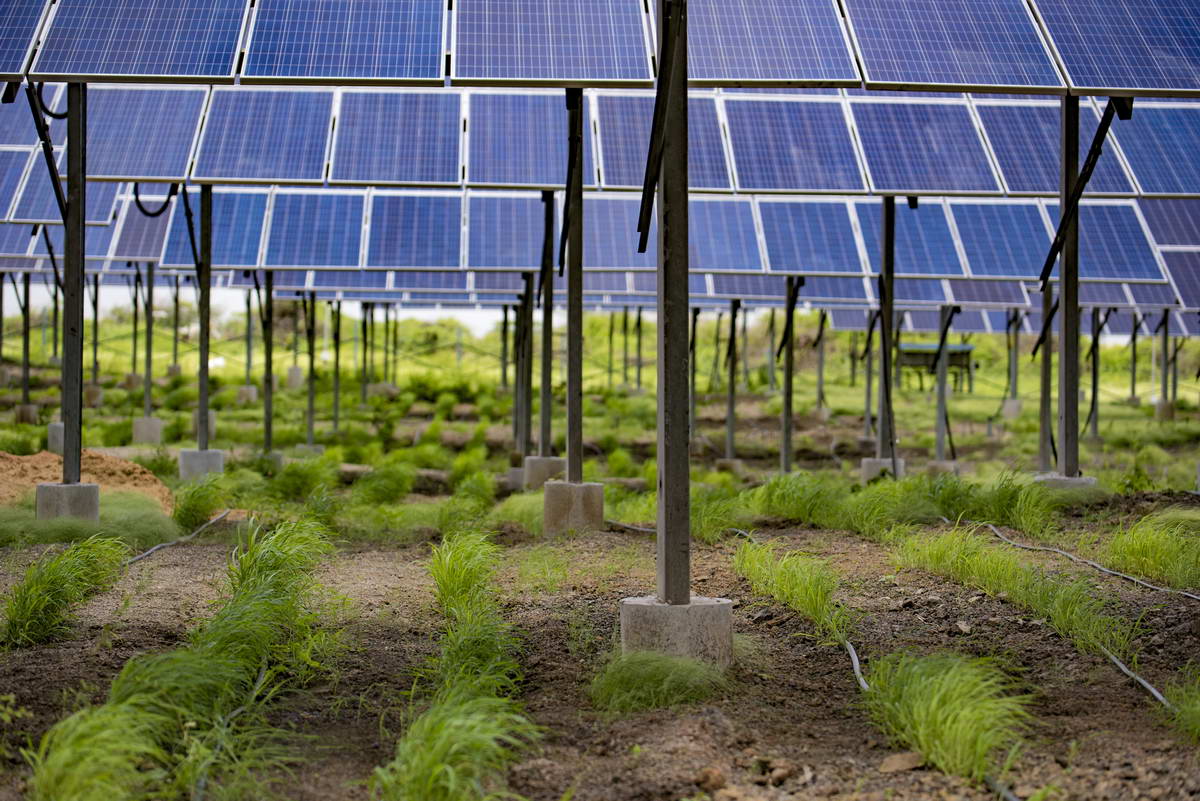India’s 1st Solar + Agriculture Project
Land that is best for solar installations are often well suited to growing crops. And that was the starting point for the pilot project that the Government of Gujarat undertook to test if solar plants and agriculture can co-exist. Since then, two ground-mounted solar projects of 1MW each have been awarded to us and were successfully implemented in Sikka, District Jamnagar and Panandhro, District Kutch.
The project focused on the potential usage of agricultural land for solar power generation and how it could bring about a change in the earnings of farmers with a dual income. A careful study was undertaken by the government to identify the types of crops that can be sown under the solar modules, and the effect that solar modules can have on the crops.
The module mounting structure was designed for seasonal tilt at a height of 3 meters from the ground. Different types of module spacing were incorporated so as to understand the optimum module-to-module spacing that was suitable for the crops.
Crops which grow within the height of 2 meters could be grown and all the seasonal crops that fulfil this criterion could be undertaken. Water used to clean the modules was also used for irrigating the crops beneath, thus optimised the natural resources.
Our studies suggest that an average of 4 - 5 families can benefit from such 1 MW solar plant.



